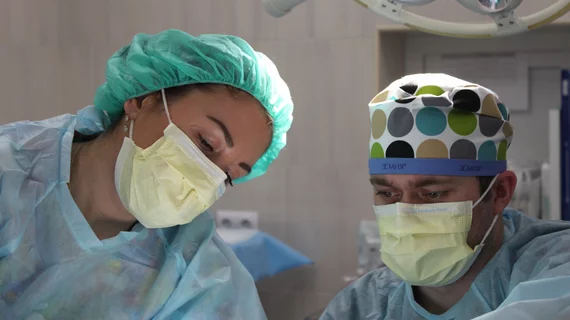Endocarditis after SAVR more likely with bovine valves
Surgical aortic valve replacement (SAVR) with a bovine valve prosthesis is associated with a higher risk of prosthetic valve endocarditis (PVE) than SAVR with a porcine valve prosthesis, according to new research published in the Journal of the American Heart Association.[1]
PVE, the severe inflammation of a patient’s endocardium after the implantation of a prosthetic heart valve, can lead to heart failure and even death. Cardiac researchers all over the world have ramped up research on the root causes of PVE in hopes of being able to limit cases going forward.
“The use of biological valve prostheses in patients who undergo SAVR has increased during the past decade, and in patients who undergo transcatheter aortic valve replacement (TAVR), biological valve prostheses are the only available option,” wrote first author Natalie Glaser, MD, PhD, a cardiologist with Stockholm South General Hospital in Sweden, and colleagues. “Biological aortic valve replacement is generally performed with prosthetic valves made from either bovine or porcine tissue … bovine and porcine prostheses tend to degenerate in different manners, which may affect their vulnerability to microbial overgrowth. Whether porcine aortic valve prostheses carry a higher risk of endocarditis than bovine prostheses is unknown.”
Glaser and colleagues explored data from more than 21,000 patients who underwent SAVR in Sweden from 1997 to 2018. The mean patient age was 73 years old, and 61% were men. Follow-up data were tracked for up to 22 years, though the mean follow-up time was six years. While 79% of patients received a bovine valve prosthesis, the remaining 21% received a porcine valve prosthesis. Patients who received a bovine valve were slightly younger and more likely to present with hypertension or diabetes. Patients who received a porcine valve were more likely to present with a prior myocardial infarction or a history of heart failure, chronic kidney disease or concomitant coronary artery bypass grafting.
Overall, 5% of patients in the porcine group and 4.2% of patients in the bovine group were hospitalized for infective endocarditis. Late endocarditis was more common than early endocarditis.
However, after regression standardization was used to make certain adjustments based on differences between the two patient populations, the risk of PVE was found to be higher for patients in the bovine group than those in the porcine group. The estimated cumulative incidence of PVE after 15 years was 9.5% for the bovine group and just 2.8% for the porcine group.
Meanwhile, the 30-day mortality rate for both groups was roughly 3%. The bovine group was linked to lower crude mortality rates after five, 10 and 15 years, but after regression standardization was performed, “there was no statistically significant difference in the risk of death between the two groups.”
Glaser et al. also explored the causes of valve failure typically associated with bovine and porcine prostheses. Porcine valves more typically fail due to “cusp tears and valve insufficiency,” they explained, while bovine valves are more likely to fail due to stenosis caused by “gradual degenerative changes.”
“Gradual degeneration rather than cusp tears or valve incompetence might make bovine prostheses more prone to bacterial overgrowth,” the authors wrote. “This may explain the higher risk of endocarditis associated with bovine prostheses found in this study.”
The researchers concluded their research by emphasizing the fact that these results do not also apply to TAVR patients. This study may add “important information about valve-related complications” that heart teams can learn from, they wrote, but this specific research only applies to patients treated with SAVR.
Click here for the full story.

